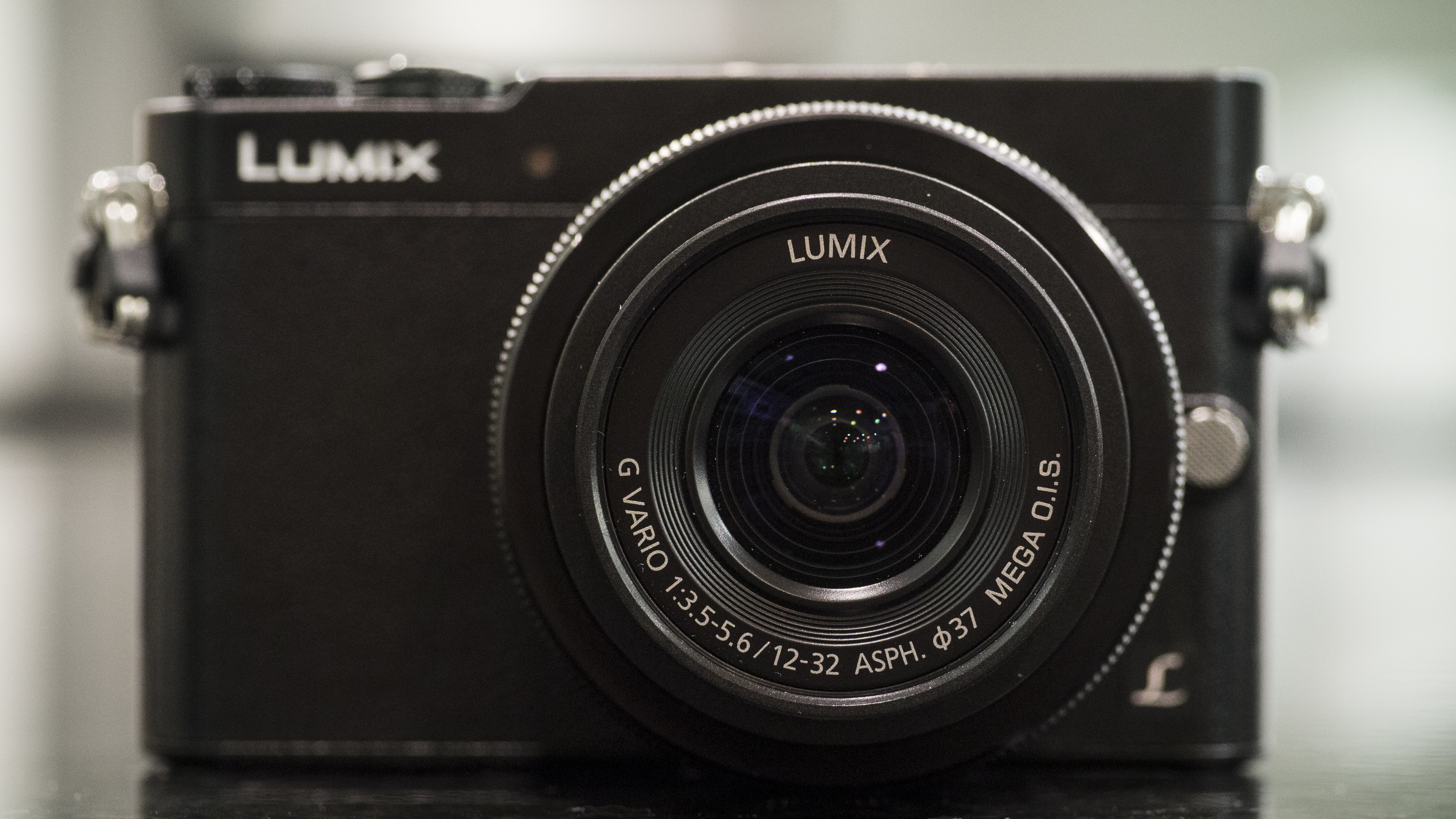Why you can trust TechRadar
We shoot a specially designed chart in carefully controlled conditions and the resulting images are analysed using DXO Analyzer software to generate the data to produce the graphs below.
A high signal to noise ratio (SNR) indicates a cleaner and better quality image.
For more more details on how to interpret our test data, check out our full explanation of our noise and dynamic range tests.
These graphs compare the GM5 with the Panasonic GM1, the Olympus OM-D EM10 and the Sony Alpha 5000.
JPEG signal to noise ratio
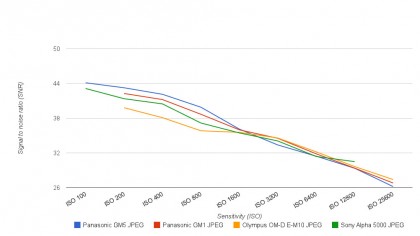
Analysis: The GM5's JPEGs have the best signal to noise ratio of the cameras in this group, right up to an ISO (sensitivity) setting of 1600. Beyond that, the noise levels are pretty even amongst all four cameras.
Raw signal to noise ratio
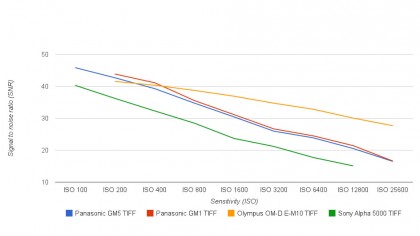
Analysis: The GM5's raw files show a signal to noise ratio more or less in the middle of the group across the range of sensitivities. The Olympus OM-D E-M10 is visibly better at higher ISO (sensitivity) settings.
JPEG dynamic range
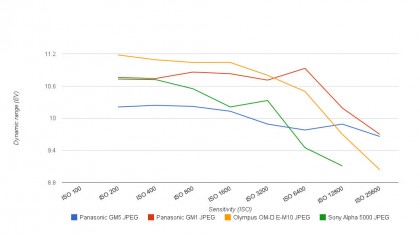
Analysis: The GM5 does lag slightly behind the other cameras for dynamic range when shooting JPEGs.
Raw dynamic range
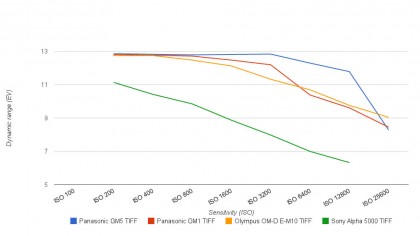
Analysis: The raw dynamic range results are much better and the GM5 is visibly better than the rest at ISO (sensitivity) settings of 1600 and higher.
Amy has been writing about cameras, photography and associated tech since 2009. Amy was once part of the photography testing team for Future Publishing working across TechRadar, Digital Camera, PhotoPlus, N Photo and Photography Week. For her photography, she has won awards and has been exhibited. She often partakes in unusual projects - including one intense year where she used a different camera every single day. Amy is currently the Features Editor at Amateur Photographer magazine, and in her increasingly little spare time works across a number of high-profile publications including Wired, Stuff, Digital Camera World, Expert Reviews, and just a little off-tangent, PetsRadar.
